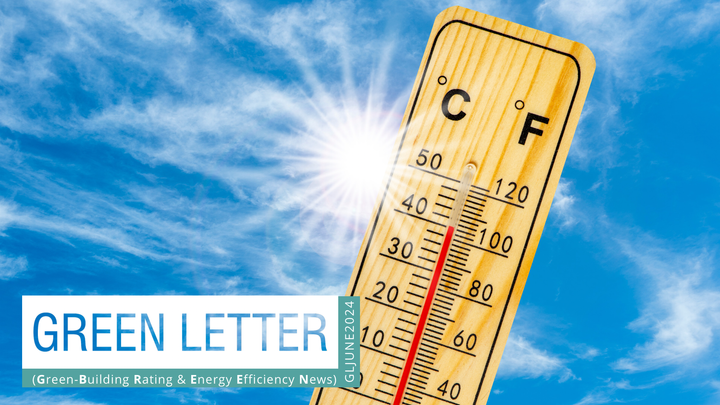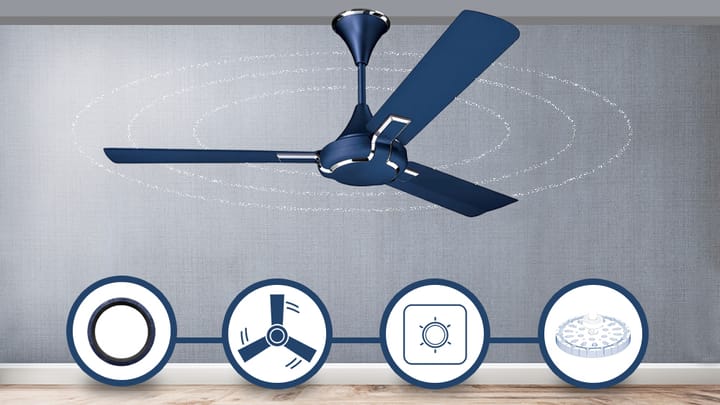Breathing Easy- Solutions for Outdoor Air Quality on Construction Projects

By: Priya Kumari, Bisma Nadeem, Anurag Bajpai and Mijul Saxena
In today’s rapidly urbanizing world, ensuring clean air is crucial for health. Construction and buildings contribute 37% of global emissions, mainly from cement, steel, and aluminium production[1]. During construction, fine dust particles (PM) pollute the air, impacting the environment, ecosystems, and human health. In Delhi, construction is responsible for 8.4% of PM2.5 and 20.8% of PM10 emissions, [2]worsening air quality. According to the World Health Organization (WHO) and Delhi Pollution Control Committee (DPCC), construction contributes 30% of Delhi’s air pollution[3], significantly degrading air quality. Globally, PM causes 6.4 million deaths annually, affecting the lungs and cardiovascular health[4].
💡 Think about it — the air we breathe, through invisible, carries the visible weight of our choices. As construction sites multiply across our cities, so do the pollutants they release which silently affects the lungs, lives, and livelihoods. Poor outdoor air quality is no longer just an environmental issue; it's a pressing public health crisis.
Why does this matter? Because the dust and emissions from construction don't stay on-site but travel, settling into neighbourhoods, schools, and workplaces. Understanding the sources, the compliances, and the solutions isn't just good practice — it's a responsibility.
I. Why Outdoor Air Quality Matters on Construction Sites?
Outdoor air quality is often overlooked in the construction industry, but its impact is profound for workers, nearby communities, and the environment. To better understand the impact of construction on outdoor air quality, a comparative analysis was conducted across major Indian cities — Delhi, Ahmedabad, Bangalore, Chennai, Hyderabad, Kolkata, and Mumbai. Data sourced from the Ministry of Statistics & Programme Implementation's 2024 report[5] was used to evaluate pollutant concentrations in these urban areas.
The accompanying graph presents year-wise average pollutant levels across these cities, showcasing pollutant concentration. The data underscores the dominance of PM10 among various pollutants, reinforcing the urgent need for targeted mitigation strategies in the construction sector.

Air pollution arises from multiple contributing sectors, and if we take Delhi as an example, the National Clean Air Programme (NCAP) 2019 report identifies key sources such as vehicular emissions, road dust, construction activities, industrial emissions, garbage burning, domestic sources, and diesel generator (DG) sets[6]. Among these, the construction sector stands out as one of the major contributors to Delhi’s deteriorating air quality. The most common causes of construction-related emissions are demolition activities, site preparation, uncovered material stockpiles, frequent vehicle movement and construction operations.

II. How does regulatory compliance help control air pollution from construction activities?
Effective air pollution control in the construction sector begins with strict adherence to environmental regulations. These regulations provide a clear framework to minimise emissions of particulate matter, dust, and other pollutants that degrade air quality and pose risks to public health. A comprehensive approach to compliance involves both proactive monitoring and targeted mitigation strategies, including the following:
- Continuous air quality monitoring is essential for maintaining regulatory compliance on construction sites.
- Real-time tracking of pollutant levels enables immediate corrective actions to prevent exceedances.
- Emission testing and sampling help measure the concentration of harmful pollutants in the air.
- Pollution control technologies are used to reduce emissions directly at the source.
- Compliance with national and local regulations must be ensured throughout all construction phases to minimise environmental impact.
By consistently integrating these measures, the construction industry can significantly reduce its environmental footprint and contribute to healthier, more sustainable urban environments.
a. Role of State Pollution Control Boards in Enforcing Construction Compliance
As our cities grow, so does the need to keep the air we breathe clean. Construction plays a major role in shaping urban spaces, but without the right checks in place, it can also become a significant source of air pollution. That is where State Pollution Control Boards (SPCB) come in. These agencies are not just regulatory bodies, they are key partners in making sure growth does not come at the cost of public health or environmental well-being.
i. Haryana State Pollution Control Board (HSPCB) Compliance: Key Guidelines for a Cleaner Haryana
In Haryana, the HSPCB has implemented a series of robust measures to reduce construction-related air pollution. Construction sites must comply with a range of directives, including some measures[7]:

ii. Enforcing Cleaner Construction Practices in Delhi NCR
The Commission for Air Quality Management (CAQM) has also introduced stringent compliance measures across the National Capital Region (NCR).

These regulations specifically target the construction sector, with a focus on dust control and waste management. Construction projects, especially those on plots larger than 500 square meters, must be registered on the state or Government of National Capital Territory of Delhi (GNCTD) web portal for real-time monitoring of dust control efforts.[8]
b. Understanding GRAP and Construction Ban Norms
The Graded Response Action Plan (GRAP) is a set of emergency measures implemented by the government to combat severe air pollution in Delhi and its neighbouring regions. Under GRAP, when the Air Quality Index (AQI) reaches the "severe" category (AQI 401-450)[9], stringent actions are enforced to reduce pollution. One of the most impactful measures is the ban on construction activities, which is triggered to curb the dust and particulate matter generated by construction sites. This ban affects various construction-related operations, including excavation, demolition, and other activities that significantly contribute to air pollution. For developers, this means potential project delays, increased costs, and legal ramifications. Understanding these regulations and taking proactive measures to control emissions on-site is crucial for avoiding such disruptions and ensuring uninterrupted progress.
III. Seven Reasons to Prioritise Air Quality on Construction Sites
Clean air is more than just a comfort on construction sites, it is critical to safety, efficiency, and sustainability. From protecting workers' health to meeting legal standards, below are seven compelling reasons why every construction project should make air quality a top priority.

IV. The Road Ahead
As construction activities continue to expand across urban landscapes, addressing air pollution at its source has become more urgent than ever. With regulatory measures like GRAP and the potential for construction bans, developers need to be proactive in ensuring air quality standards are met, as this may pose the risk of project delays, legal consequences, and financial losses. GreenTree Global is committed to helping construction projects maintain clean air standards through a range of consultancy services. These include conducting wind analysis, provision of installing air quality monitoring systems, and offering training to ensure teams are equipped to manage air quality responsibly.
By taking a comprehensive approach to air pollution control, GreenTree Global supports developers in preventing work disruptions, maintaining compliance, and contributing to a healthier, more sustainable environment. Don’t wait for air quality regulations to impact your project—act today to safeguard your work site from pollution-related risks- navigate the path to compliance and cleaner construction practices.


References:
[1] https://www.unep.org/resources/report/building-materials-and-climate-constructing-new-future
[2] https://www.ceew.in/blogs/how-can-indian-cities-plan-to-curb-dust-air-pollution-caused-by-construction-and-real-estate-sector
[3] https://www.pranaair.com/in/blog/what-is-construction-pollution-and-its-causes-effects/
[4] https://www.worldbank.org/en/news/feature/2022/09/01/what-you-need-to-know-about-climate-change-and-air-pollution
[5]https://mospi.gov.in/sites/default/files/reports_and_publication/statistical_publication/EnviStats/Complete_ES1_2024.pdf
[6] https://mpcb.gov.in/sites/default/files/air-quality/National_Clean_Air_Programme09122019.pdf
[7]File No.HSPCB-380003/55/2022-Air-Cell-HSPCB
[8]https://caqm.nic.in/WriteReadData/LINKS/CAQM%20PR%200703202547a38098-9ee0-4a78-b2dd-5dd285bf8509.pdf
[9] https://www.ceew.in/blogs/how-can-indian-cities-plan-to-curb-dust-air-pollution-caused-by-construction-and-real-estate-sector


